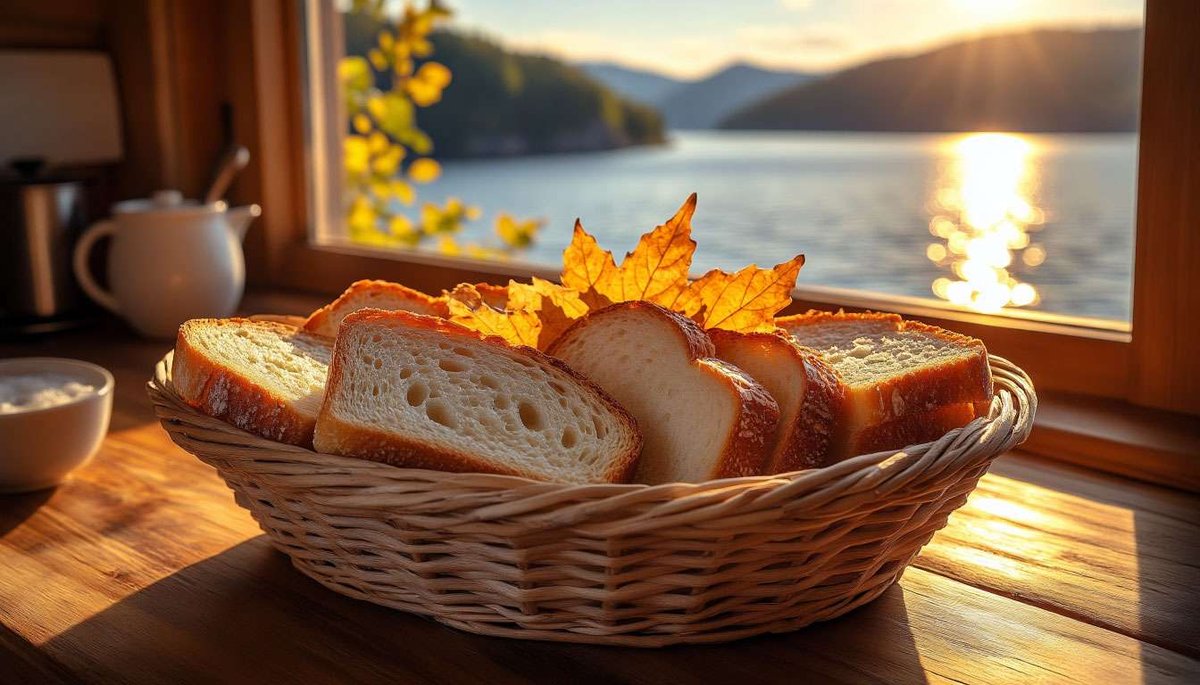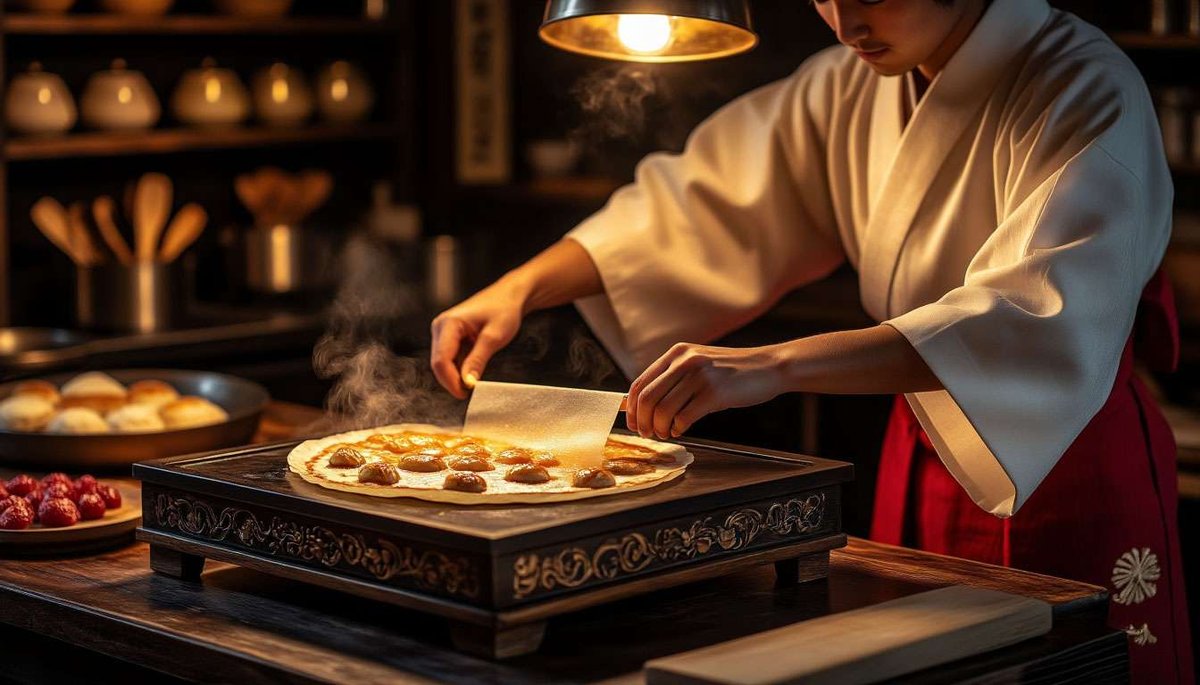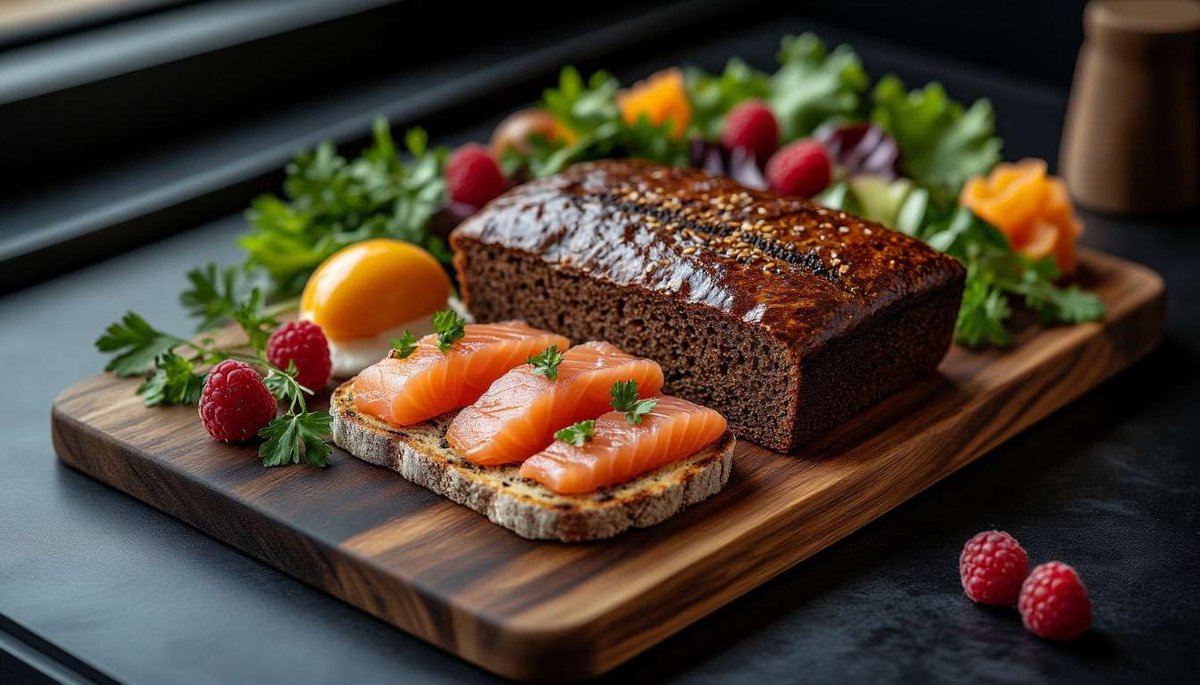The grain heart of Norway: whole grain Grovt brød, crispy Flatbrød and rye Knekkebrød

The first thing that is placed on the table in Norway is a bread basket: dark slices of Grovt brød, crispy Knekkebrød and thin Flatbrød flatbreads. They differ in texture but are similar in their respect for simple grains and long storage in a harsh climate. Let's find out why Norwegians eat bread three times a day, how each variety came about, and where tourists can try the perfect slice with brown cheese.
What is Grovt brød and why is it the main source of energy in a Norwegian breakfast?
Grovt brød is a heavy wholemeal bread with added flax seeds, sunflower seeds and oat flakes. The technique of soaking the grains overnight (bløtlegging) stimulates the development of enzymes that break down phytic acid, making the bread easier to digest and keeping you feeling full for longer. The percentage of whole grains is strictly regulated: to qualify for the Grovhetsmerket label, the dough must contain ≥ 50% unrefined flour. In the morning, Norwegians spread butter on a slice of bread, add salmon or Brunost and wash it down with filter coffee — the perfect "slow" energy for a trip to the fjord.
How does Flatbrød differ from flatbreads in other northern countries and how did it come about?
Flatbrød is an ultra-thin, almost transparent flatbread made from rye or barley flour, water and salt, baked on a hot flat pan (takke). It originated in the Viking era: dry, brittle bread was easy to store on ships and did not go mouldy. Less than a millimetre thick, flatbrød dries instantly and stays crisp for years if kept in a tin. It is eaten as an "edible plate" with soups or meat stews, and shepherds still take a bag of flatbreads with them to the mountains instead of dishes.

Why do Norwegians need Knekkebrød when they have Flatbrød, and how is it baked?
Knekkebrød is a crispy "brick" made from rye flour with large pores. The dough is dried, rolled out, pierced with a special wheel and baked at a low temperature for 40 minutes. Its porous structure makes it easy to break ("knekk" means "click" in Norwegian). It is stored in a jar and taken on hikes: its low moisture content and sunflower seeds provide 20% protein and 10g of fibre per 100g. A piece of Knekkebrød with Jarlsberg and apple cider is a classic snack when hiking in the Jostedalsbreen glacier.
How are modern bakers rethinking traditional bread?
In Oslo, the Åpent Bakeri bakery makes Grovt brød with wild apple sourdough and bakes Flatbrød with dried dulse seaweed for a salty umami flavour. In Bergen, Godt Brød is experimenting with gluten-free Knekkebrød made with oat flour, buckwheat and pumpkin seeds. New Nordic chefs serve a mix of warm Grovt with heather honey and mini Flatbrød with cloudberry sorbet alongside cheese, demonstrating that simple bread can be a gourmet ingredient.

Where can tourists try and buy the best Norwegian bread?
- Baker Hansen (Oslo) – the Grov+ line with 75% whole grain; morning tastings with Brunost.
- Bergen Fish Market – Flatbrød from the Vossebakeriet home bakery; try it with fish soup.
- Trønderbakeren (Trondheim) – Knekkebrød with sea salt; take a pack with you on your hike.
Look for the Nøkkelhullet logo in supermarkets – it guarantees a high whole grain content and low sugar content.
Can Grovt brød and Knekkebrød be baked at home, and what are the important details?
For Grovt brød, keep the hydration at 80% and autolyse for 12 hours: the whole grains need to absorb the water. Bake for 50 minutes at 230°C with steam, then 15 minutes at 200°C. Knekkebrød: roll out the dough between two sheets of parchment paper 3 mm thick, prick with a fork, dry for 10 minutes at 100°C, then 30 minutes at 160°C. The most important thing is to let it cool completely on a wire rack: it will become crispy once the moisture has evaporated. Store in a tin box to preserve the Norwegian "crunch" until the next breakfast.
Bread in Norway is more than just a side dish: it is a daily ritual, a Viking legacy and a power bank for travelling in harsh climates. Try warm Grovt brød with smoked salmon, crispy Flatbrød with a plate of foricolla, and crunchy Knekkebrød on a mountain top, and you'll understand how simple grain connects the past and present of northern cuisine. Take home a packet of Knekkebrød – every 'click' will take you back to the windy fjords and the smell of fresh baking in the quiet streets of Oslo.





2 comments
Log in to leave a comment